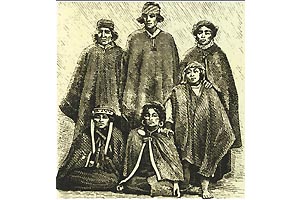He was born in Santiago on June 26th, 1823. His parents were Manuel Saavedra Saavedra and Josefa Rodriguez Salcedo.
At the age of thirteen he joined the Army as a cadet, achieving the rank of sergeant major in 1847. His quick rise can only be explained by his impeccable performance and leadership during his instruction. But despite his solid career, Saavedra decided to leave the Army in 1849 due to some ailments that were affecting his health. He withdrew to the city of Concepcion, where he worked in the private sector and married Dorotea Rivera Serrano, with whom he had a son.
However, his stray from the military ranks would last very little, because he became part of the revolutionary forces against the arrival of Manuel Montt to power (1851). The Guias de Concepcion battalion was under his charge, which was soon defeated by the government of the time. After this, Saavedra returned to his business work in Concepcion.
Six years later he would once again be tempted to return to the ranks of the army. Manuel Montt, setting aside their differences, designated him as intendant and commander of Arms in Arauco.
However, in 1859, Cornelio Saavedra would be entrusted with an important mission that took him years to complete: the pacification and occupation of the Araucania. On October 24th, 1861, he was designated commander in chief of the armies operating in the zone south of the Biobio, as well as intendant and commander of Arms of Arauco.
Saavedra put together a detailed plan of action to reach his objective. However, he soon faced opposition from some that defended the indigenous people, and even from president Montt. But after the appearance of Frenchman Orelie Antoine de Tounens, self-proclaimed king of the Araucania, the new president, Jose Joaquin Perez, decided to give him his full support.
This way, Saavedra advanced beyond the border imposed by the indigenous people at the Biobio river and built the townships of Negrete, Mulchen, Angol and Lebu.
He soon had the attention of a few mapuche chiefs, holding several parliaments to let the official voice of authority be heard, and he even built roads and bridges, updating the sector. During a second incursion to the territory, Saavedra and his troops managed to reach Tolten river.
Cornelio Saavedra remained in mapuche territory for almost 20 years, after which president Anibal Pinto designated him minister of War and Navy in August of 1878. During the Pacific war he participated in different confrontations. One of his greatest victories was the occupation of Lima, in January of 1881.
When he returned to the country he continued his political career. He was elected senator in 1885 for the province of Ñuble.
He passes away in Santiago on April 7th, 1891.








 Muere Evita
Muere Evita